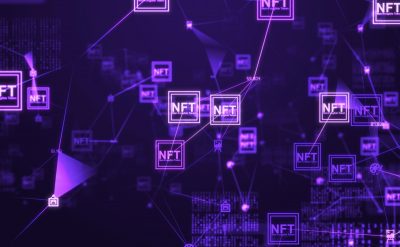Highlights:
- Blockchain is the most secure data integrity, decentralization, and verifiability technology. However, blockchain security issues remain.
- Awareness of blockchain security issues is necessary to develop superior networks and systems.
In recent years, blockchain technology has gained immense popularity as it holds the potential to transform the security tenets in financial transactions and information exchange. The technology offers various advantages, particularly cryptographic security, even as issues remain. Blockchain banks on the principles of consensus, decentralization, and cryptography to ensure trust in transactions. However, despite the security enhancement, blockchain security issues remain and differ in some critical security aspects.
Where there’s money, hackers exist too, and blockchain networks are thriving both. Blockchain-based attacks can come from outside and inside as well. For many of these hacks, common tactics are used, including phishing, routing attacks, Sybil attacks, social engineering, attacking data in transit or targeting coding mistakes.
This blog delves into the specifics of blockchain security and privacy and offers mitigation strategies for security issues.
Blockchain is essential now more than ever
With the next wave of digital transformation kicking in, the world wants to dive into it fast. This is especially true with blockchain technology. One reason why blockchain technology has been able to garner significant attention is because of its one-of-a-kind capabilities. It’s also acceptable with different use cases. The blockchain protocol has emerged as a reliable approach to introducing enhanced security and transparency in technological solutions. To get a better understanding, let’s first discuss what blockchain is all about.
The storing of various pieces of digital information, also known as blocks, inside a public database is essentially blockchain technology. These blocks of data are connected via cryptographically secure links between them. What has made blockchain popular is its propensity to limit “double spending.” In addition, using the same currency for two separate transactions is not something that can be done using blockchain.
Before discussing the vulnerabilities, let’s look at a blockchain’s components. Each block includes three essential bits of information, which are as follows:
- Information regarding transactions, including the date, amount, and time of the purchase.
- A one-of-a-kind mathematical hash or code that differentiates each block.
- The names and contact information for each of the parties involved in the transaction.
New blocks can be added to a blockchain for new transactions subsequently. After the validation of a new transaction, a unique identifying code is sent.
How security differs by blockchain types
Who may join a blockchain network and who has access to its data might vary. At first, there are two types of networks, public and private.
Public blockchain networks: Public blockchain networks permit any user to join while allowing them to maintain anonymity. It makes use of internet-connected computers to validate transactions and reach consensus. Bitcoin is a well-known example of a public blockchain, and its name is familiar to everyone. It achieves consensus via “blockchain mining.”
Private ledger networks: Private blockchain networks rely on identification to confirm membership and access privileges. Additionally, only recognized organizations are permitted to join. A private blockchain network reaches an agreement using a procedure known as “selective endorsement,” in which known users validate the transactions. This sort of network requires increased authentication and access constraints.
How secure is blockchain
With cryptographic security and the commitment that the data cannot be modified without the consent of other participants, blockchain appears to be secure. This form of technology can also provide you with proof of account transactions.
But this does not mean that blockchain is not susceptible to cyber-attacks or fraud. Hackers can still exploit security vulnerabilities to gain an advantage. Many such examples of blockchain attacks have made headlines from time to time. Let’s look at some of the top blockchain security vulnerabilities in 2022.
Blockchain security issues in 2022
It is widely believed that blockchain is intrinsically safe, and this conclusion is not incorrect. Nevertheless, blockchain has some security limitations. Let’s examine some of the greatest dangers to blockchain security in 2022.
51% Attacks: Miners play a crucial role in verifying transactions on the blockchain. A 51% attack is, perhaps, the most dreaded in the blockchain industry. This type of attack is an assault on a blockchain by a group of miners who control more than 50% of the network’s mining hash rate. Most likely, such attacks happen early in the chain and do not apply to enterprise or private blockchains. Such people also seize control of the entire system. The order of the transactions can be modified by hackers, preventing them from being confirmed.
To prevent the attacks, follow the below:
- Improve mining pool monitoring
- Ensure a greater hash rate
- Avoid employing proof-of-work (PoW) consensus techniques
Routing Attacks: Routing attacks are yet another prominent concern for blockchain security and privacy issues. Blockchain networks and applications rely on the real-time movement of vast amounts of data. An attacker can leverage the anonymity of an account to intercept data being transferred to internet service providers.
Typically, participants in a blockchain are unaware of these types of attacks because data transfer and activities continue as usual. In addition, routing attacks disclose private information or steal funds without the victim’s knowledge.
To prevent routing attacks:
- Implement safe routing protocols
- Make use of data encryption
- Alter passwords often and employ robust passwords
- Inform yourself and your personnel of the risks connected with information security
Phishing attacks: These attacks are growing on blockchain networks every passing day, leading to serious issues. Generally, phishing attacks target individuals or company employees.
The goal of the hacker is to steal the credentials of users. To achieve this, users send emails to the owner of the wallet key that appears to be legitimate. The user needs to fill in the login details through a fake hyperlink. With users’ credentials and other sensitive information being shared, it may result in damages for both the user and the blockchain network.
To prevent phishing attacks:
- Install a verified add-on to enhance browser security that will send notifications about unsafe websites.
- Install malicious link detection software and dependable antivirus software to enhance device security.
- Do not click on the link until it has been reviewed.
- Always keep your system and software updated.
Transaction Privacy Leakage: Transaction privacy leakage is another addition to existing blockchain security issues in 2022.
On blockchain networks, user activity is very much traceable. The dissemination of network data keeps information synced and enables remote nodes to establish consensus. Therefore, blockchain systems must protect the privacy of users’ transactions.
To prevent transaction privacy leakage:
- Provide users with a private key for every transaction
- Introduce mixins to limit the capabilities of hackers. Under mixing services, many users conduct simultaneous transactions with numerous inputs and outputs. Thus, transaction inputs and outputs cannot be connected.
Bottom line
The security issues discussed in this blog clearly show the complexity of blockchain security. Awareness of blockchain security issues is necessary to develop superior networks and systems. Additionally, technological improvements such as the development of AI solutions for infrastructure, transaction, and code analysis might result in new blockchain security trends.













